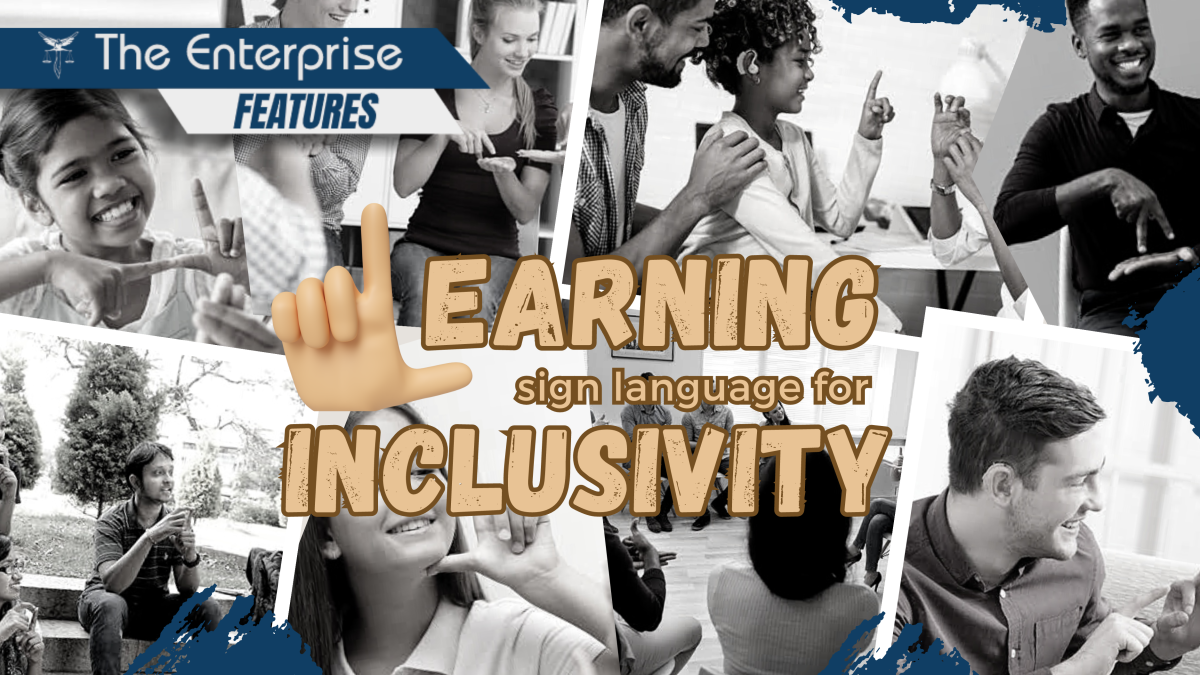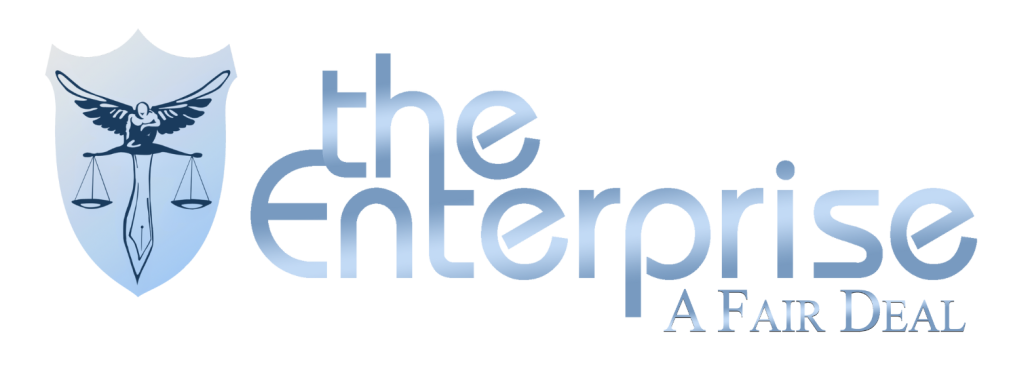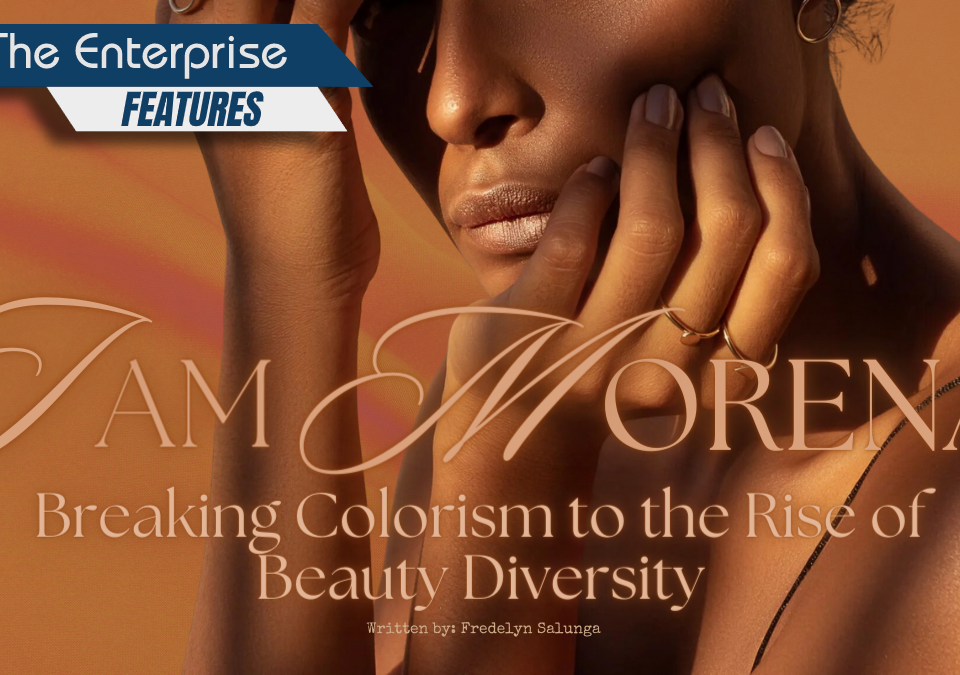
Angelite Discount Program: Prosperity through Cultivating Community
August 13, 2023
The Calm Before the Exam
August 23, 2023TALKING HANDS: Building a Bridge for Communication Inclusivity

Effective communication is a cornerstone for an interconnected society in a constantly changing world that strives for diversity and inclusion. However, amidst this commendable endeavor, the transformative potential of sign language often goes unnoticed, leaving a number of individuals on the periphery.
Sign language holds profound significance, yet its value is in an underestimation atmosphere. While some may perceive these signs as “another” form of communication, for the unique community, it is the tool they possess to participate in the world, just as other individuals fully.
A Silent Battle
Envision a world where your voice remains unheard – each attempt to communicate is en route to dismissive glances and pitying smiles. Your thoughts and emotions are hidden, for your language is understood only by a few.
This “imaginary” world is the reality for many deaf, mute, and hard-of-hearing individuals. Simple tasks like ordering food or seeking help become hurdles, often exacerbated by ignorance.
In an article titled “I’m Done Saying Sorry for Being Deaf,” Liam O’Dell, a deaf journalist, highlighted his regular use of “Sorry, I am deaf” in customer service scenarios. These words hold weight, shedding light on the ongoing struggles that deaf individuals like Liam face in social interactions.
An Alarming Number
Globally, 1.5 billion people – nearly 20% of the world’s population – are affected by hearing loss, with 430 million dealing with disabling communication challenges, according to the World Health Organization. Meanwhile, only about 70 million have access to sign language, highlighting the limited support for the deaf community. In the Philippines, this issue is also prevalent. In 2009, the deaf population reached 517,536.
Currently, the National Survey of Hearing Loss in the Philippines revealed that 15% of Filipinos grappling with moderate to severe hearing loss, impacting various age groups – 7.5% of children, 14.7% of those aged 18 to 65, and a staggering 49.1% of individuals aged 65 and above.
Laws in the Philippines
In 1992, the Magna Carta for Persons with Disabilities (RA 7277) stated to safeguard the rights of individuals with disabilities in society. In its provisions, Section 22 “encouraged” television stations to incorporate sign language insets into news programs. However, the term “encouraged” led to optional sign language use on TV, limiting information accessibility for the deaf community.
In response, Senate Bill No. 2117 mandated Filipino Sign Language (FSL) insets in local news, ensuring information accessibility for vulnerable groups.
Former President Rodrigo Duterte declared FSL the National Sign Language in 2018 to amplify support. It became the official language for government transactions involving the deaf or hard of hearing and the language of instruction in deaf education.
The Struggle
In the Philippines, progress towards inclusivity for deaf people remains challenging. Instances like Drew Olivar and Mocha Uson mocking the deaf community by derisively mimicking their hand gestures highlight the ongoing struggles for social acceptance.
Further, the Philippines has only 648 Special Education (SPED) centers, with 4,000 teachers for 126,598 learners. Funding shortfalls, like the P532 million SPED budget exclusion from the National Expenditure Program, worsen the situation and signify that educational support also needs to be improved.
Representation also remains a pressing issue for the deaf community. In 2017, the Senate’s controversial move to have blind representatives explained FSL marginalized the deaf society.
Aside from that, the pandemic deepened communication obstacles for deaf people due to the complex FSL grammatical rules and limited internet access. Interpreter scarcity also worsened the situation, making conveying COVID-19 information to the deaf, as linguist Liza Martinez noted, incredibly challenging.
Bridging the Gap
Despite daunting adversities, fostering inclusivity in the community is possible. For instance, the Center for Education Advancement of the Deaf (CEAD) spearheads research on deaf education, Filipino Sign Language (FSL), and deaf culture. Moreover, the collaboration between the United States Agency for International Development (USAID), Resources for Blind, Inc. (RBI), and the Philippine Department of Education improves deaf children’s education accessibility.
“Inclusive education for people with all disabilities is essential. Children with disabilities must have equal access to school. We cannot leave them out,” emphasized Justine Barcena, an FSL educator.
These initiatives, while foundational, require active engagement from hearing communities to cultivate a safer and authentically inclusive environment. Hence, learning sign language is one of the most impactful ways to include the community.
Individuals are willing to create a more inclusive society by learning the basics. Small gestures, like being able to introduce ourselves or say “thank you,” can make a big difference in making deaf individuals feel valued. Initiating this journey is as simple as engaging with video tutorials, enrolling in online courses, or utilizing applications like FSL Buddy and Filipino Sign Language.
Sign language is not merely a means of communication. It is a bridge that connects individuals from different communities, thus fostering an environment where understanding and empathy are present. By learning it, we can effectively communicate with deaf individuals and receive insights into their challenges.
Ultimately, learning sign language is an investment in creating a society where every individual’s uniqueness is valued. Through breaking the shackles of communication barriers, we create spaces where diversity is the main lead, and everyone can fully participate, nurturing a more inclusive world.
LAYOUT ARTIST: LJ Niña Yutuc
PHOTO SOURCE(S): Free Range Stock, City of Portsmouth College, Jovan Mandic, Andrey Popov, Bangalore Mirror Bureau, Jovan Mandic, Deaf and Hard of Hearing Services Division, & Monika Wisniewska.


